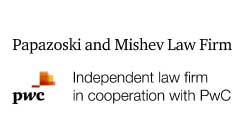In the context of the ESG framework, under the planned allocation within the EU, Slovenia should (according to the EIB) allocate EUR 520 million per year to renewable energy sources and their efficient use, and EUR 780 million per year if we add transport, waste, and water to the equation.
Considering such numbers, the investment gaps for achieving climate, energy, and environmental goals by 2030 and 2050 – which may seem very distant at this time, but we know how time flies – are quite large.
Namely, the volume of investments as a share of GDP in Slovenia, both for companies and the state, and especially for the population, is below the EU average and, in the last decade, significantly lags behind pre-2010 investments. The reasons are different, but it is known that state-sector investments have increased due to the crisis, while the main savers – the population – do not have much confidence in capital markets, not even in the new forms of ESG investments. We cannot talk about a “green euphoria” in Slovenia just yet. However, the situation seems to be developing rapidly.
Slovenian banks are gearing up internally to be able to take the largest part of the responsibility for the ESG transition of the entire economy. With some delay compared to more advanced markets, they are intensively working on the implementation of all ESG-related reporting requirements. Slovenian banks are also putting significant efforts into becoming “greener” themselves, both by educating their employees to increase their sensibility to ESG matters and by introducing measures aimed at reducing carbon dioxide emissions and paper usage, promoting health, etc. Finally, and most importantly, they are working on improving their loan portfolios from an ESG perspective. General ESG questionnaires have already been sent to Slovenian companies by most Slovenian banks. The feedback of Slovenian companies to this exercise was not entirely positive – in particular, companies cooperating with several banks complained about the heap of work needed to complete all the different forms received (some contained more than a hundred questions). On the other hand, there are organized efforts for the harmonization of such questionnaires, led by the Slovenian Banking Association and supported by the regulator.
There is already some opportunity to achieve better commercial terms if ESG aspects are considered in depth within the credit approval process. However, at least for now, this usually means a longer and more complex approval process. One of the leading banks in ESG-colored financings primarily considers, for sustainable financing, those activities which materially and directly contribute to environmental goals, particularly to the adaptation to and mitigation of climate changes, as well as activities that are key for the zero-carbon transition. The latter may also include industries that are currently “brown” (cement, steel, chemical industries) and do not yet have technologically or economically viable alternatives, if it can be expected that, with the development of technology, rapid and substantial positive climate effects will be achievable.
As regards alternative sources of financing, the small Slovenian market is not very developed. We rarely see mezzanine or junior financing and similar. Equity financing, including via joint ventures, is more frequent, and there is some crowdfunding. Investment funds could take over the role of accelerating the finance and capital markets but are still struggling with the question of how to assume risk, instead of playing a more intermediary role. Nevertheless, we have recently seen a few financings by a Slovenian private equity fund, particularly in real estate (as expected, with notably higher interest rates compared to bank loans). Foreign investment funds generally give an advantage to larger projects and, usually, do not build the capacity and the knowledge of the local Slovenian market.
In view of the above, and additionally taking into account the relatively small Slovenian pension schemes, some market commentators perceive a risk that Slovenia might not seize all the advantages of the recent ESG trends. However, watching how ESG is becoming a hot front for Slovenian commercial companies as well, I do believe that – if taken seriously and carried out sincerely – ESG financing should play a decisive role in the green transition, and should also be of more interest in the new economic reality of increasing finance costs.
By Mia Kalas, Partner, Selih & Partnerji
This article was originally published in Issue 10.4 of the CEE Legal Matters Magazine. If you would like to receive a hard copy of the magazine, you can subscribe here.






















